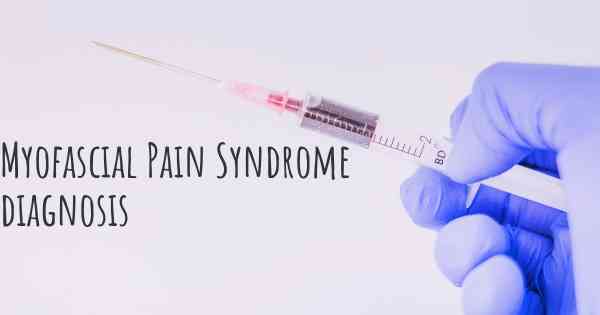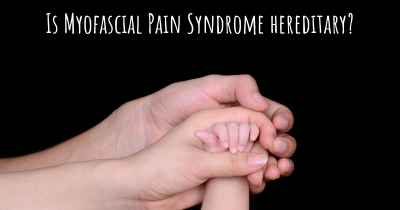How is Myofascial Pain Syndrome diagnosed?
See how Myofascial Pain Syndrome is diagnosed. Which specialists are essential to meet, what tests are needed and other useful information for the diagnosis of Myofascial Pain Syndrome

Diagnosis of Myofascial Pain Syndrome
Myofascial Pain Syndrome (MPS) is a common condition characterized by the presence of trigger points in the muscles, which cause localized pain and referred pain patterns. Diagnosing MPS can be challenging as it shares symptoms with other musculoskeletal disorders. However, healthcare professionals employ a combination of methods to accurately diagnose this condition.
Medical History and Physical Examination
The first step in diagnosing MPS is a comprehensive medical history and physical examination. The healthcare provider will ask detailed questions about the patient's symptoms, including the location, duration, and intensity of pain. They will also inquire about any factors that exacerbate or alleviate the pain. Additionally, the healthcare provider will perform a physical examination to assess muscle tenderness, range of motion, and the presence of trigger points.
Identification of Trigger Points
Trigger points are the hallmark of Myofascial Pain Syndrome. These are hyperirritable spots within a taut band of muscle fibers that cause pain when compressed or stimulated. The healthcare provider will palpate the muscles to identify the presence of trigger points. They will apply pressure to specific areas and ask the patient if it reproduces their pain or other symptoms. The identification of trigger points is crucial for diagnosing MPS.
Referred Pain Patterns
One characteristic feature of Myofascial Pain Syndrome is the presence of referred pain patterns. Referred pain is pain felt in an area distant from the actual site of the trigger point. The healthcare provider will assess if the patient experiences pain in specific areas when pressure is applied to trigger points. The presence of consistent referred pain patterns helps confirm the diagnosis of MPS.
Diagnostic Imaging
In some cases, diagnostic imaging may be necessary to rule out other potential causes of pain and to support the diagnosis of Myofascial Pain Syndrome. Imaging techniques such as X-rays, magnetic resonance imaging (MRI), or ultrasound can help visualize the muscles, tendons, and other soft tissues. These imaging modalities can help identify any structural abnormalities or rule out other underlying conditions.
Electromyography (EMG)
Electromyography (EMG) is a diagnostic test that measures the electrical activity of muscles and nerves. It can be useful in differentiating Myofascial Pain Syndrome from other conditions that may present with similar symptoms. During an EMG, a thin needle electrode is inserted into the muscle to record its electrical activity. This test can help identify any abnormalities in muscle function and rule out other neuromuscular disorders.
Elimination of Other Causes
Since the symptoms of Myofascial Pain Syndrome can overlap with other conditions, it is essential to rule out other potential causes of pain. The healthcare provider will consider other musculoskeletal disorders, such as fibromyalgia, arthritis, or nerve entrapment syndromes, and perform additional tests if necessary. By eliminating other possible causes, the diagnosis of MPS becomes more accurate.
Response to Treatment
Another important aspect of diagnosing Myofascial Pain Syndrome is observing the patient's response to treatment. If the patient experiences relief from pain and improvement in symptoms after receiving appropriate treatment for MPS, it further supports the diagnosis. Treatment options for MPS include physical therapy, trigger point injections, medications, and other modalities aimed at reducing pain and improving muscle function.
Collaboration with Specialists
In complex cases or when the diagnosis is uncertain, healthcare providers may collaborate with specialists such as rheumatologists, neurologists, or pain management specialists. These specialists can provide additional expertise and perform further evaluations to confirm the diagnosis of Myofascial Pain Syndrome.
In conclusion, diagnosing Myofascial Pain Syndrome involves a combination of medical history, physical examination, identification of trigger points, assessment of referred pain patterns, diagnostic imaging, electromyography, elimination of other causes, observation of treatment response, and collaboration with specialists. A comprehensive approach is necessary to accurately diagnose MPS and differentiate it from other musculoskeletal disorders.








